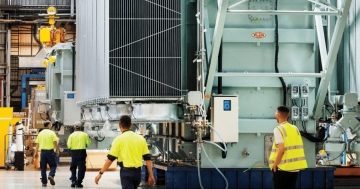
Victoria’s Minister for Women and Education Natalie Hutchins is working with the National Association of Women in Operations on a Mentee Sponsorship Program for women in the energy and manufacturing industries. Photo: NAWO.
A discussion paper has been released to the public seeking insight on how to increase female participation in the male-dominated industries of energy and manufacturing.
The document is part of the Allan Government’s broader response to the Economic Equity for Victorian Women inquiry, which found women made up only 31 per cent of the manufacturing workforce.
Minister for Women Natalie Hutchins hopes this effort will not only reduce barriers to accessing these industries, but also provide women with opportunities to thrive in their careers.
According to a KPMG paper on the economics of the gender pay gap, segregation between the sexes in these male-dominated sectors is estimated to account for 17 per cent of the reason women earn less and are more financially insecure.
Written submissions to the paper are due by 30 November. Feedback is particularly welcome regarding strategies for creating safe work environments for diverse women, in recognition that some groups of women face additional barriers to participation in many industries.
“I look forward to hearing from the manufacturing and energy sectors about how we can support more women to carve successful careers in these industries,” Minister Hutchins said.
“Increasing women’s participation in male-dominated industries, especially in trade-based and leadership roles, will help women fully contribute to our state’s economy, towards a more equal state.”
Victoria’s inquiry into economic equity for women found that “entrenched stereotypes” influence young people’s decisions about their careers.
Women are overrepresented in health care, social assistance and teaching sectors where jobs are often low-paid and insecure. Yet in male-dominated industries salaries are more likely to be higher and performance pay and bonuses are more common.
The state government recently announced an $840,000 investment into four organisation’s programs to help women rise to senior positions, create a safe workplace culture, and bring more female students into the energy and manufacturing industries.
The organisations include the Australian Manufacturing Workers’ Union, the National Association of Women in Operations (NAWO), Victorian Trades Hall Council and Australian Women in Solar Energy.
These programs are only the first part of a larger $2.7 million effort to resolve the gender inequity across these two sectors, while other industry-specific initiatives are being implemented into construction, transport, and science, technology, engineering and maths (STEM) education.
According to a NAWO case study into petroleum refineries company Viva Energy, the company’s gender diversity initiatives have increased female representation in their Geelong site from 16 to 27 per cent over the past four years, and operator roles from 9 to 25 per cent in the last five.
In another case study on chemical company Dulux Group, their efforts to introduce more flexible, family-friendly shift patterns has raised productivity, engagement and retention and reduced absentee numbers.






